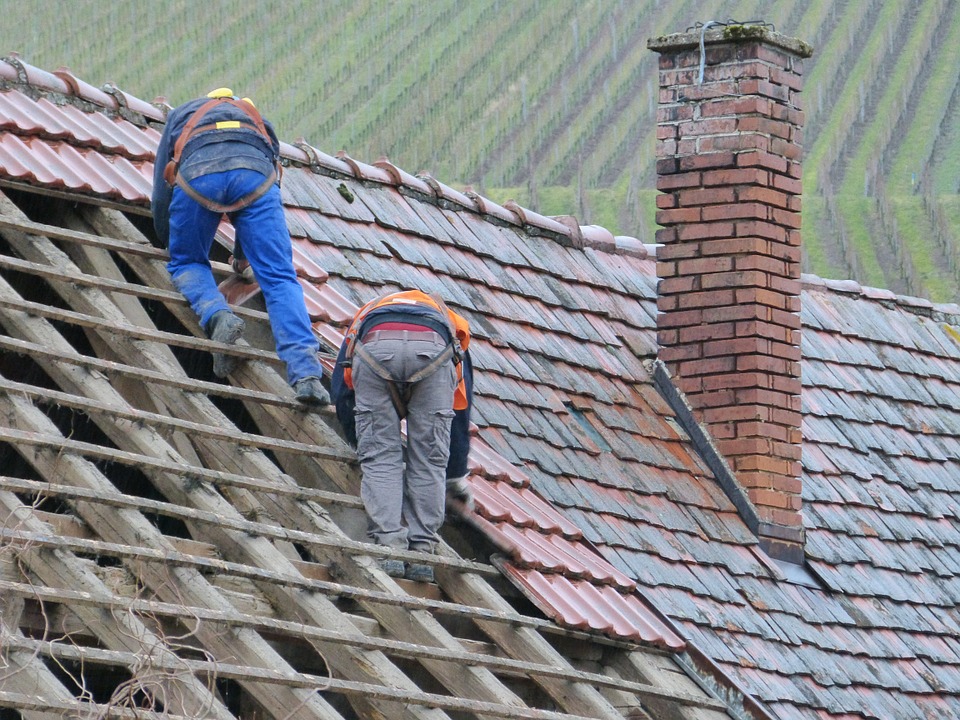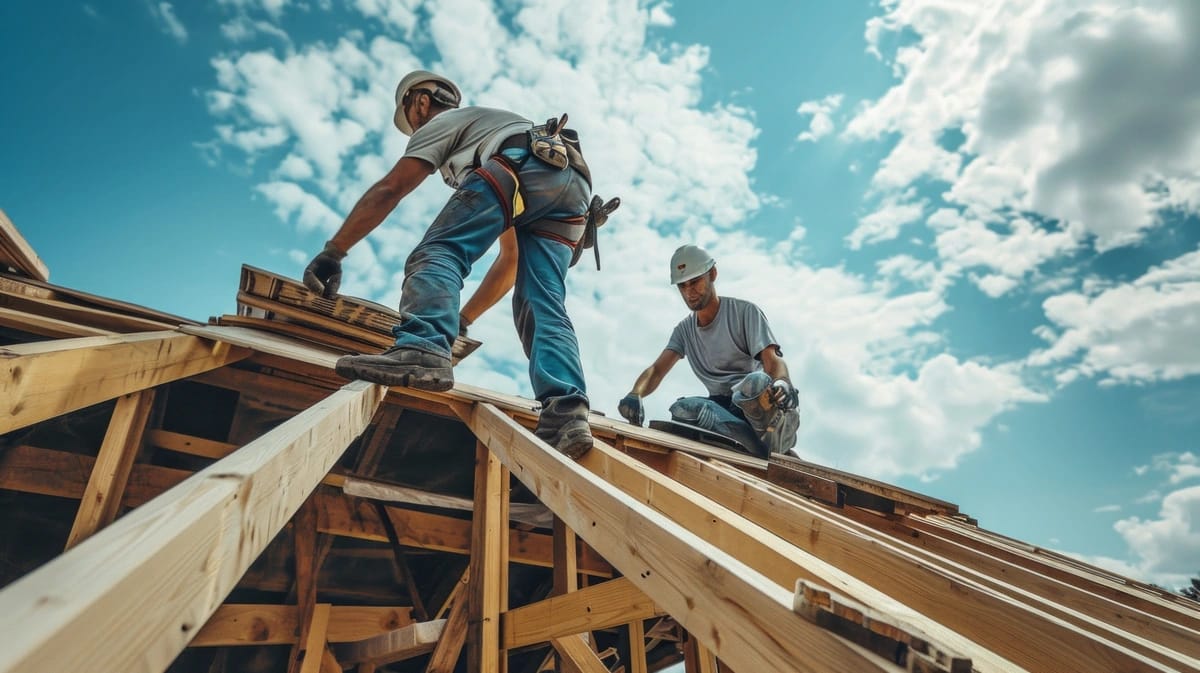Recognizing the Different Types of Roofs: A Comprehensive Guide for Homeowners
With a selection of options-- varying from the traditional gable to the modern flat-- each kind offers unique benefits and obstacles that should straighten with the homeowner's environmental considerations and particular demands. As we discover the complexities of different roof kinds, it becomes obvious that one size does not fit all; the best choice might stun you.
Gable Roofs
Gable roofs, defined by their triangular form, are amongst one of the most popular roof covering designs due to their simpleness and efficiency in shedding water and snow. This style features 2 sloping sides that fulfill at a ridge, allowing for efficient water drainage and minimizing the threat of water buildup. The steep pitch frequently connected with gable roofs enhances their capacity to manage heavy precipitation, making them suitable for numerous climates.
Along with their sensible benefits, gable roof coverings supply visual adaptability. They can be adapted to various architectural designs, from typical to modern-day homes. The layout can also accommodate added attributes such as dormer windows, which boost natural light and ventilation in the attic room area.
Additionally, gable roofing systems give enough space for insulation, adding to power effectiveness. Home owners can select from a range of roof covering materials, including asphalt shingles, metal, and floor tiles, better improving customization alternatives.
Regardless of their advantages, saddleback roofs may call for added assistance in locations susceptible to high winds or heavy snowfall. In general, the saddleback roof stays a popular choice due to its blend of performance, longevity, and aesthetic allure.
Apartment Roofs
Level roofings are often identified for their minimalist style and useful applications, particularly in industrial and industrial setups (oahu roofing). These roofing systems feature a horizontal or nearly straight surface, which permits very easy building and functional room usage. While they may lack the visual charm of pitched roofings, level roofs offer countless benefits, specifically in urban environments where maximizing room is vital
Among the primary benefits of level roofing systems is their availability. House owners can use the roofing space for numerous purposes, such as roof gardens, terraces, or solar panel installations. Furthermore, flat roofings are commonly a lot more cost-effective to keep and install contrasted to their sloped counterparts, as they call for fewer materials and labor.
However, level roofing systems do present certain difficulties. Correct drain is important to protect against water pooling, which can cause leaks and architectural damage. Thus, picking top notch waterproofing products and routine inspections are important for ensuring durability. Usual materials utilized for level roofs include built-up roof (BUR), changed bitumen, and single-ply membrane layers, each offering distinctive advantages. On the whole, flat roofing systems act as a functional and adaptable selection for numerous house owners and organizations alike.
Hip Roofs
Hip roofs are characterized by their sloped sides that merge on top, creating a ridge. This layout is distinctive from saddleback roofs, as all four sides of a hip roof incline downwards toward the walls, offering a more stable structure. The angle of the inclines can differ, enabling for flexibility in building visual appeals and functionality.
Among the key benefits of hip roofs is their ability to withstand hefty winds and negative climate condition. The sloped surface areas allow better water drain, minimizing the danger of leakages and water damage. Additionally, hip roof coverings supply raised attic space, which can be made use of for storage space and even exchanged comfortable areas.
However, creating a hip roofing system can be more complex and expensive than easier roof types, such as gable roofings. The additional product and labor associated with developing the slopes and making sure appropriate architectural honesty can lead to higher expenditures. In spite of these downsides, several homeowners favor hip roofing systems for their longevity, aesthetic allure, and potential for energy performance.
Mansard Roofing Systems
Mansard roofs, commonly recognized by their special four-sided layout, feature two inclines on each side, with the reduced slope being steeper than the upper. This building style, stemming from France in the 17th century, is not just aesthetically attractive yet functional, as it makes best use of the useful room in the upper floors of a building. The steep reduced incline enables even more headroom, making it a suitable option for lofts or attics, which can be transformed into living areas.
Mansard roof coverings are characterized by their flexibility, accommodating different building designs, from typical to modern-day. They can be built with different products, including asphalt shingles, slate, or metal, offering house owners with a variety of alternatives to match their budget plans and choices. In addition, the layout allows for the assimilation of dormer home windows, improving natural light and ventilation in the upper levels.
However, it is necessary to think about the prospective drawbacks. Mansard roofs might call for more maintenance due to the intricacy of their layout, and their steep slopes can be testing for snow and rainfall overflow. Generally, mansard roofing systems combine sophistication with usefulness, making them a preferred option among homeowners looking for unique architectural attributes.
Lost Roofings
As property owners significantly look for simplicity and capability in their building designs, lost roofs have actually become a popular selection. Defined by a single sloping plane, a shed roofing provides a minimal aesthetic that complements numerous home styles, from modern to rustic.
Among the key advantages of a shed roof is its simple construction, which usually translates to lower labor and product costs. This style permits for efficient water drain, decreasing the threat of leaks and water damages. In addition, the vertical slope supplies ample space for skylights, improving all-natural light within the inside.
Shed roof coverings likewise use adaptability in regards to usage. They can be efficiently integrated into enhancements, garages, or exterior frameworks like sheds and structures. Additionally, this roofing design can suit various roof covering materials, including metal, asphalt roof shingles, and even environment-friendly roofing systems, straightening with environmentally friendly efforts.
Nevertheless, it is vital to consider local environment problems, as hefty snow tons may require changes to the roof's angle or structure. Overall, shed roofs present a functional and visually pleasing choice for house owners seeking visit this site to make best use of capability without jeopardizing design.
Conclusion


Gable roofings, identified by their triangular form, are among the most prominent roof covering styles due to their simplicity and performance in dropping water and snow. oahu roofing. The steep pitch typically linked with gable roofs improves their capacity to handle hefty precipitation, making them appropriate for different environments
While they might lack the visual appeal of pitched roofing systems, flat roof coverings offer various advantages, specifically in urban atmospheres where making best use of space is important.
